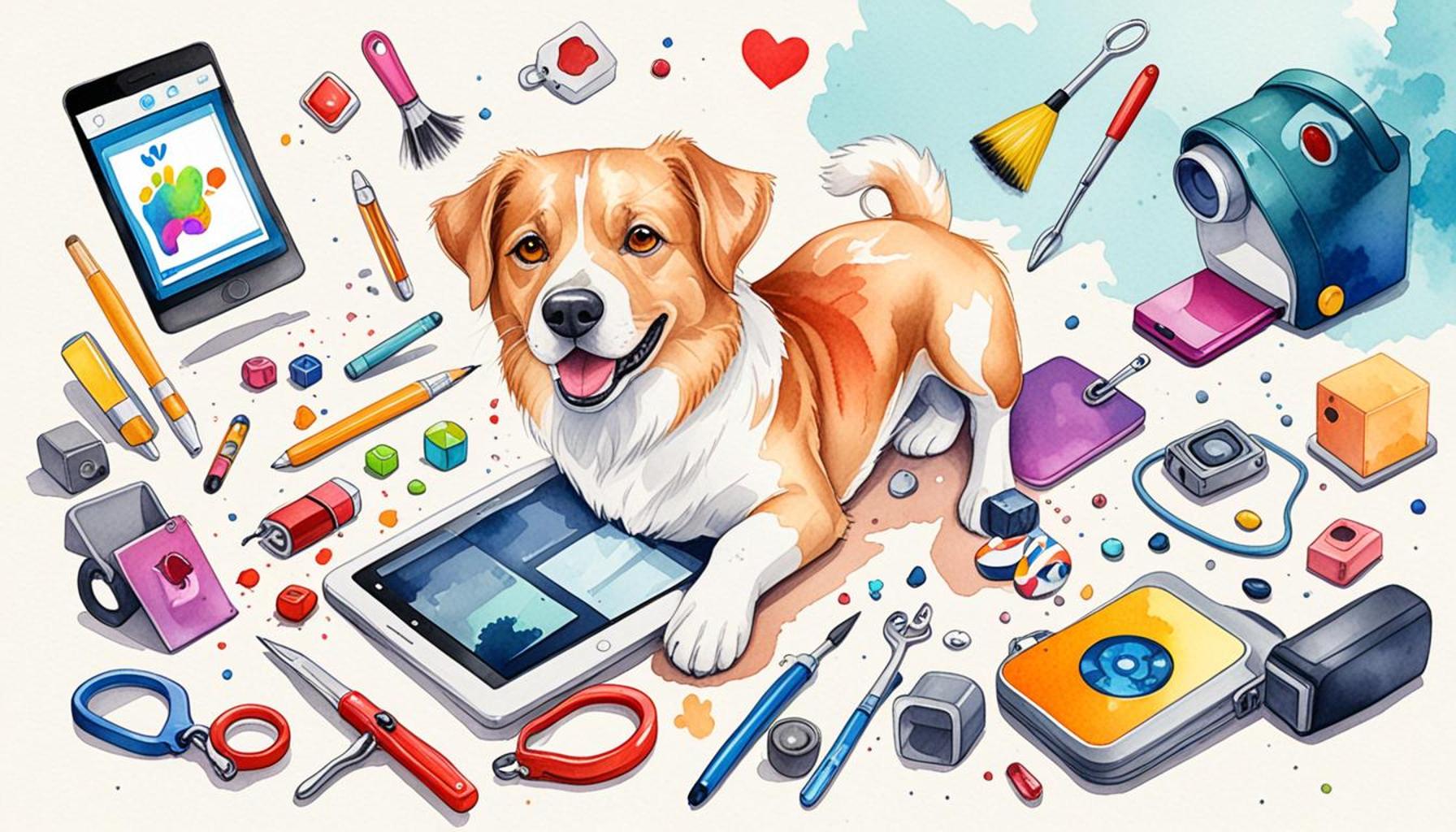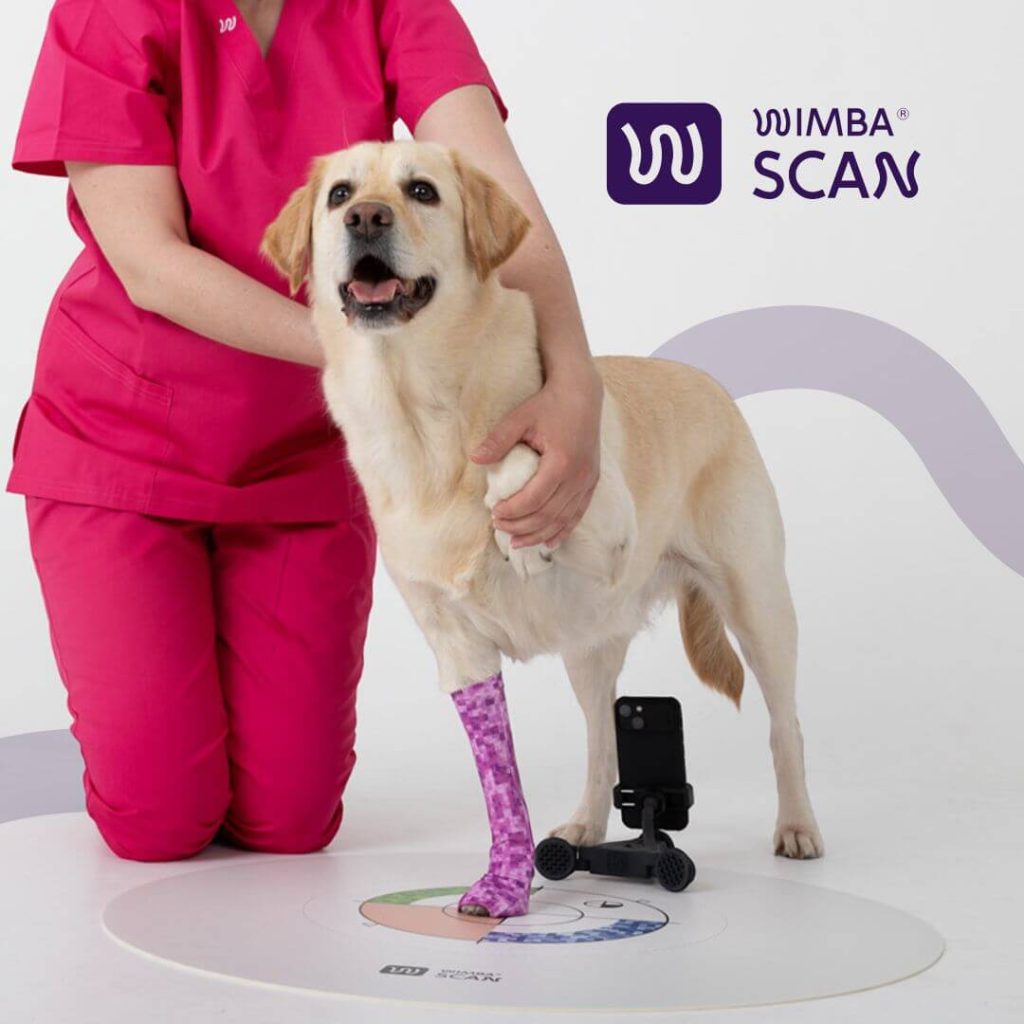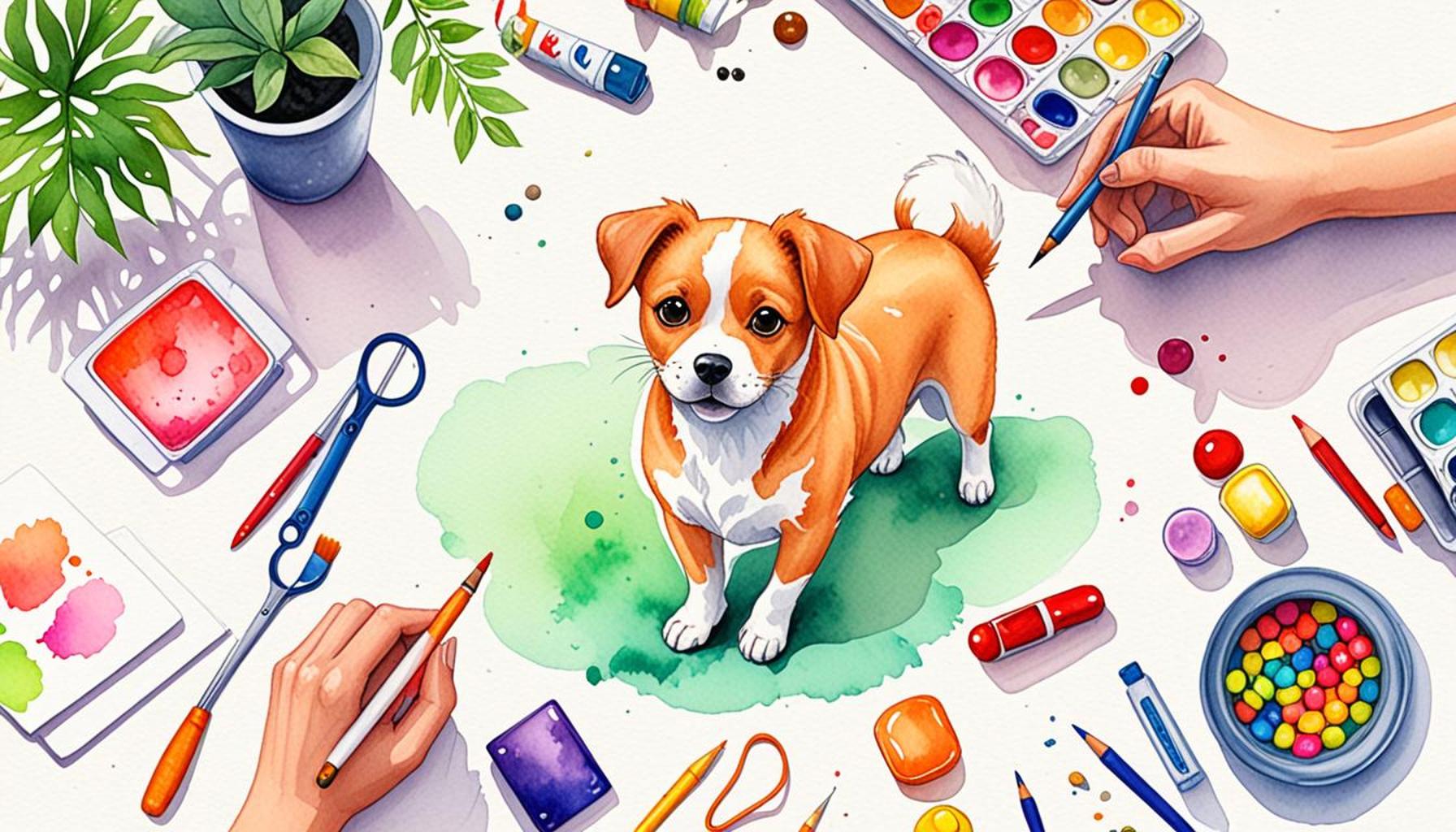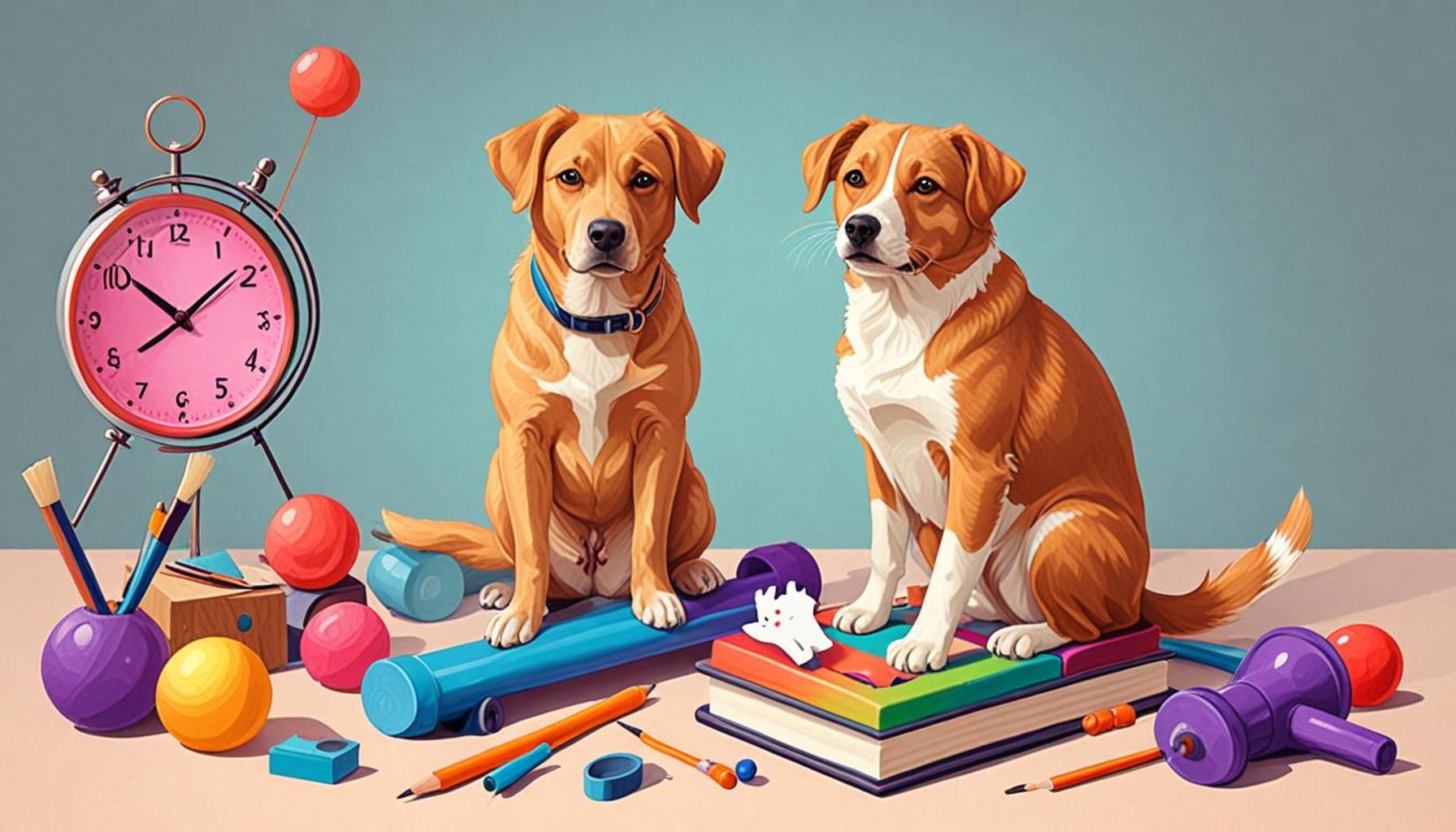Using Technology in Pet Training: Apps and Tools for Modern Pet Owners

Embracing the Digital Age in Pet Training
In today’s fast-paced world, technology has become an integral part of our lives, even in the realm of pet ownership. Modern pet owners are increasingly turning to innovative apps and tools that enhance their training methods and improve communication with their furry companions. With a plethora of options available, it is essential to explore various features and advantages these technologies offer. The transformation of pet training through digitization is not just about convenience; it is also about creating a deeper connection between pet and owner.
Notable Technological Innovations in Pet Training
Several noteworthy innovations have emerged in the world of pet training, each designed to simplify the training process while ensuring effective communication. Here are some notable options:
- Training Apps: Platforms like Pupford and Dogo provide step-by-step training guides right at your fingertips. These apps often include video tutorials, which can visually demonstrate techniques and commands, making it easier for owners to understand how to train their pets. Moreover, they often come with community forums, allowing pet owners to share advice and experiences, which can be a great support system.
- Tracking Devices: GPS collars enable you to monitor your pet’s location and activity levels, ensuring their safety. Not only do these devices help prevent lost pets by allowing owners to track their movements in real-time, but they can also provide insights into their activity patterns. This information is vital for ensuring your pet receives adequate exercise and mental stimulation, directly impacting their well-being.
- Interactive Toys: Devices that connect to your smartphone can stimulate your pet mentally and physically. These toys often involve games that challenge pets to think and problem-solve, keeping them engaged and preventing boredom. Some even dispense treats as rewards for completing tasks, reinforcing positive behavior in a fun and interactive way.
The Science Behind Digital Training Tools
As pet training evolves, these digital solutions come equipped with data analysis tools and personalized training plans. Many apps utilize positive reinforcement techniques, helping reinforce good behavior with rewards. For example, with tracking features, you might observe how often your pet responds to commands and tailor your training approach accordingly. This data-driven methodology not only enhances the training experience but also empowers owners to make informed decisions about their pets’ education.
For instance, some platforms allow users to track their pet’s progress through engaging games and challenges, turning learning into a fun experience. The incorporation of gamification—where training tasks mimic video game mechanics—has seen a surge in popularity, making it easier for pets to remain engaged. As you navigate this exciting landscape, consider how these tools can not only simplify your training regimen but also strengthen the bond with your pet.
Looking Towards the Future
The evolution of pet training tools signifies a shift in how owners perceive and approach their pets’ education. With emerging technologies such as virtual reality and artificial intelligence on the horizon, the future of pet training looks promising and full of possibilities. From personalized training routines powered by AI to virtual coaching sessions, the possibilities are endless. By embracing these advancements, pet owners can enhance their training practices, ensuring their beloved companions not only learn but thrive.

LEARN MORE: Click here for helpful tips on adopting a pet
Revolutionizing Pet Training with Apps and Tools
As pet parenting continues to evolve, integrating technology into training strategies has become a game changer for many modern pet owners. The rise of specialized applications has made it possible for individuals to take a proactive approach to their pet’s education. This shift demonstrates how technology can bridge the gap between traditional training methods and contemporary needs, catering to both the pet and the owner in a nuanced manner.
Among the wider array of resources available, training apps serve as a popular starting point for many. These apps cater to a variety of training needs—whether it involves teaching basic commands, addressing behavioral issues, or preparing for specific situations such as pet therapy or obedience competitions. Popular training applications like Pupford and Dogo provide users with an extensive library of tutorials, easy-to-follow videos, and training schedules, allowing pet owners to customize their approach based on their pet’s unique requirements.
Key Features of Training Apps
Training apps have several standout features that make them indispensable tools for modern pet owners:
- Video Tutorials: Many apps offer video demonstrations that simplify complex training techniques, ensuring that pet owners can execute commands effectively. Visual learning helps solidify concepts, making it easier for both the owner and the pet to grasp new skills.
- Community Support: Users often benefit from forums and online communities, facilitating interaction with other pet owners who can offer insights, share experiences, and provide additional support. Engaging with a community can enhance the training experience and create lasting friendships.
- Progress Tracking: The ability to log training sessions and monitor progress offers insights into what works best for a specific pet. This data-driven approach empowers owners to adjust their techniques and celebrate successes, regardless of how incremental they may be.
Another innovative approach to pet training involves the use of tracking devices. These products are designed to monitor pets’ behaviors and movements, ensuring the safety and well-being of beloved companions. GPS collars have gained popularity among pet parents anxious to keep tabs on their pets’ whereabouts. Not only do these collars help locate pets that wander off, but they also provide activity data that is critical for maintaining your pet’s physical health.
For example, certain GPS tracking devices not only alert owners if their pet leaves a predetermined area but also give insights into their daily activity levels. This information can lead to healthier lifestyle choices for pets, encouraging adequate exercise and reducing the risk of obesity—a common concern among many pet owners in the United States.
The interaction between technology and pet training is not merely about convenience; it’s about fostering a stronger bond between pet and owner. The various apps and tools available today enable pet owners to communicate better, train efficiently, and ultimately cultivate a well-balanced environment for their four-legged friends.
| Category | Advantages |
|---|---|
| Training Apps | Provide step-by-step guidance, engage pets with interactive content, and monitor progress. |
| Wearable Tech | Insights into pets’ behavior, health tracking, and real-time feedback help owners train effectively. |
Utilizing technology in pet training can significantly transform the journey for pet owners. Training apps revolutionize how pet owners approach learning by offering structured methodologies, tailored to various pet personalities. With features such as video tutorials, behavioral metrics, and progress tracking, these apps not only make training engaging but also ensure accountability for owners.On a different note, wearable technology provides pet owners with unprecedented insights into their pets’ activities. By monitoring physical activity and even behavioral patterns through smart collars or GPS trackers, owners can tailor training schedules more effectively. This real-time data can highlight areas needing improvement, making the entire training process more efficient and less frustrating for both pets and their owners.Explore the myriad of options available with the latest advancements to elevate your pet training experience.
DIVE DEEPER: Click here to discover effective training techniques
The Power of Interactive Training Tools
Beyond apps, a plethora of interactive training tools are transforming how pet owners engage with their pets. These tools range from smart collars and automatic treat dispensers to interactive toys, all designed to enhance the training experience. This new wave of technology offers pet owners various methods to stimulate their furry friends both mentally and physically.
One notable category is automated training devices, like the PetSafe Ricochet or the Furbo Dog Camera. These devices provide interactive play and training sessions automatically, encouraging pets to learn and play independently while letting owners oversee their pets remotely. The Furbo Dog Camera allows owners to dispense treats, talk to their pets through a two-way audio feature, and even monitor their pets’ behavior while they are away. This capability not only strengthens the bond between the pet and owner but ensures that the animal receives the necessary training reinforcement regardless of their owner’s physical absence.
Behavior Modification Tools
Technology also excels in aiding pet owners in behavior modification. Devices equipped with behavioral training functionalities can help address issues like excessive barking, chewing, or jumping. For instance, devices such as the Bark Collar by DogRook transitions the training process through vibration or sound whenever the dog barks excessively, helping them learn at a faster pace without relying solely on admonishment from the owner.
Moreover, innovations in the realm of clicker training have also surfaced, integrating the age-old concept into smart technology. Devices like Pet Trainer Pro offer clicker functions alongside app integration that records training sessions and issues reminders for follow-up training. By combining video tutorials and real-time data, these tools further streamline the training process while enhancing communication between pets and their owners.
Using Virtual and Augmented Reality for Training
A more avant-garde approach leverages virtual reality (VR) and augmented reality (AR) to modify pet training strategies. These techniques are still developing but show promise for creating immersive environments for pets, aiding them in overcoming anxiety when faced with specific scenarios, such as loud noises or unfamiliar locations. Applications integrating AR can provide pet owners with virtual guidance on training their pets within their environment—allowing for real-time feedback accompanied by visual prompts that can facilitate learning.
Such advanced integration of technology caters not only to training but also has implications for overall pet wellness. A slew of health monitoring apps and devices foster a more holistic approach to pet care, enabling owners to monitor pertinent health metrics and receive alerts about their pet’s health. Some products, including smart collars like FitBark, combine behavioral insights with fitness tracking, rewarding positive behaviors while ensuring that training aligns with overall wellness goals.
The use of technology in pet training is a continuously evolving landscape. As tools become more sophisticated and tailored to individual needs, pet owners can embrace a dynamic approach to training that goes beyond traditional methodologies, ultimately enriching their relationships with their pets. With these advances, the journey of pet ownership may become one of enhanced understanding and companionship, demonstrating that technology has the power to elevate the human-animal bond to new heights.
LEARN MORE: Click here for essential pet nutrition tips
Conclusion: Embracing the Future of Pet Training
As we have explored, the integration of technology into pet training has revolutionized the way modern pet owners approach the challenges of training and behavior modification. From interactive training tools like automated treat dispensers and smart collars to innovative solutions incorporating virtual and augmented reality, these advancements are not only enhancing training effectiveness but also enriching the overall relationship between pets and their owners.
The shift towards using apps and digital platforms empowers owners to take an active role in their pets’ development, providing valuable insights and metrics that were previously unavailable. Features such as real-time monitoring, behavior analysis, and health tracking ensure a holistic approach to pet care, merging enjoyment with responsibility. As these technologies continue to evolve, they promise to offer even more tailored solutions that meet the specific needs of both pets and their owners, making training more accessible and engaging.
For pet owners, the question is no longer whether to use technology in their training regime but how to best leverage these tools to enhance their pet’s well-being. Embracing these modern training methodologies can lead to significant improvements in behavior and communication. Moreover, building a stronger bond through technology does not diminish the inherent joy of pet ownership; instead, it amplifies the experience, fostering a deeper connection rooted in understanding, love, and shared growth.
In a world where technology increasingly influences our lives, it is clear that its role in pet training is just beginning. By staying informed about new tools and methodologies, modern pet owners can lead their pets toward a more harmonious existence, showcasing the transformative power of technology in nurturing the timeless bond between humans and animals.


